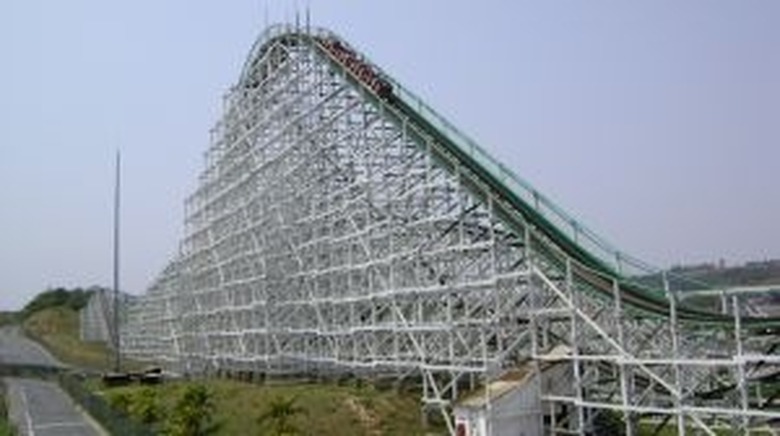How To Calculate Potential Energy
Potential energy sounds like it's simply energy that hasn't become actualized, and thinking of it like that can lull you into believing it isn't real. Stand under a safe suspended 30 feet above the ground, though, and your opinion might change. The safe has potential energy due to the force of gravity, and if someone were to cut the rope holding it, that energy would turn into kinetic energy, and by the time the safe reached you, it would have enough "actualized" energy to give you a splitting headache.
A better potential energy definition is stored energy, and it takes "work" to store the energy. Physics has a specific definition of work – work is done when a force moves an object over a distance. Work is related to energy. It's measured in joules in the SI system., which are also potential and kinetic energy units. To convert work into potential energy, you have to act against a particular type of force, and there are several. The force could be gravitation, a spring or an electric field. The characteristics of the force determine the amount of potential energy you store by doing work against it.
Potential Energy Formula for Earth's Gravitational Field
Potential Energy Formula for Earth's Gravitational Field
The way gravitation works is that two bodies attract each other, but everything on earth is so small compared to the planet itself that only the earth's gravitational field is significant. If you lift a body (m) above the ground, that body experiences a force that tends to make it accelerate toward the ground. The magnitude of the force (F), from Newton's 2nd law, is given by F = mg, where g is the acceleration due to gravity, which is a constant everywhere on Earth.
Suppose you lift the body to a height h. The amount of work you do to accomplish this is force × distance, or mgh. That work gets stored as potential energy, so the potential energy equation for earth's gravitational field is simply:
Gravitational Potential Energy = mgh
Elastic Potential Energy
Elastic Potential Energy
Springs, rubber bands and other elastic materials can store energy, which is essentially what you do when you pull back a bow just before shooting an arrow. When you stretch or compress a spring, it exerts an opposite force acting to restore the spring to its equilibrium position The magnitude of the force is proportional to the distance you stretch or compress it (x). The proportionality constant (k) is characteristic of the spring. According to Hooke's law, F = −kx. The minus sign indicates the restoring force of the spring, which is acting in the opposite direction to the one stretching or compressing it.
To calculate the potential energy stored in an elastic material, you have to recognize that the force gets bigger as x increases. For an infinitesimal distance, though, F is constant. By summing up the forces of all the infinitesimal distances between 0 (equilibrium) and the final extension or compression x, you can calculate the work done and the energy stored. This summing process is a mathematical technique called integration. It produces the potential energy formula for an elastic material:
Potential energy = kx2/2
where x is the extension and k is the spring constant.
Electric Potential or Voltage
Electric Potential or Voltage
Consider moving a positive charge q within an electric field generated by a larger positive charge Q. Because of electric repulsive forces, it takes work to move the smaller charge closer to the larger one. According to Coulomb's law, the force between the charges at any point is kqQ/r2, where r is the distance between them. In this case, k is Coulomb's constant, not the spring constant. Physicists denote both of them by k. You calculate the potential energy by considering the work needed to move q from infinitely far from Q to its distance r. This gives the electric potential energy equation:
Electric Potential Energy = kqQ/r
Electric potential is slightly different. It's the amount of energy stored per unit charge, and it's known as voltage, measure in volts (joules/coulomb). The equation for the electric potential or voltage generated by the charge Q at a distance r is:
Electric Potential = kQ/r
Cite This Article
MLA
Deziel, Chris. "How To Calculate Potential Energy" sciencing.com, https://www.sciencing.com/calculate-potential-energy-4514673/. 30 October 2018.
APA
Deziel, Chris. (2018, October 30). How To Calculate Potential Energy. sciencing.com. Retrieved from https://www.sciencing.com/calculate-potential-energy-4514673/
Chicago
Deziel, Chris. How To Calculate Potential Energy last modified March 24, 2022. https://www.sciencing.com/calculate-potential-energy-4514673/
